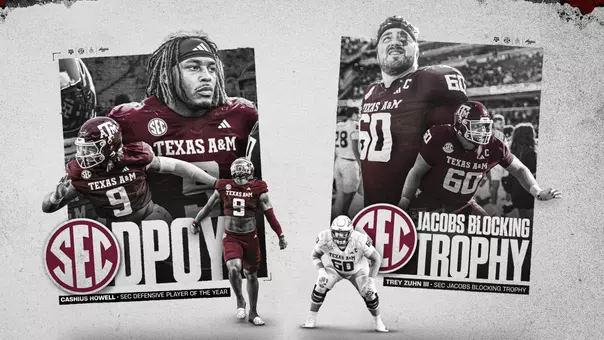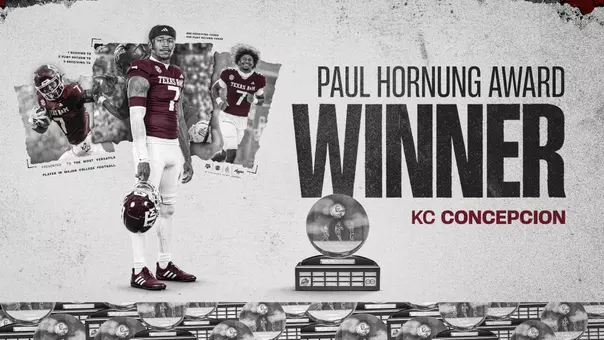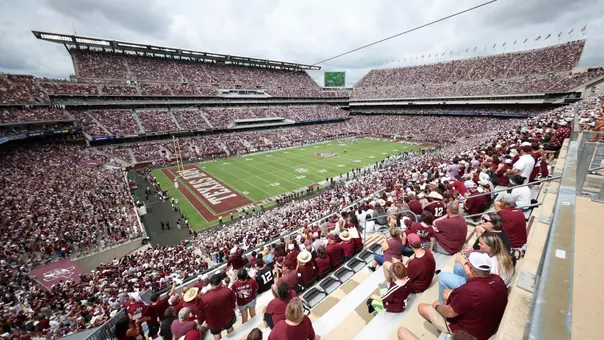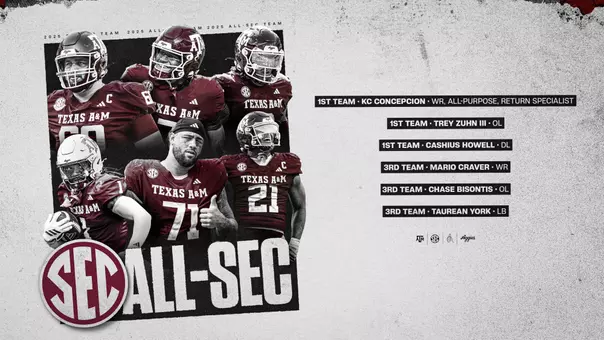
Texas A&M Record-Setter Bob Smith Passes Away
Jan 05, 2005 | Football
January 05, 2005
Bob Smith, who still holds the single-game rushing record at Texas A&M, died Jan. 5 after suffering a heart attack and stroke earlier this week. He was 75.
Smith, who lettered at A&M from 1949-51, was a first-team All-American for the Aggies in 1950, the same year he rushed for 297 yards against SMU in Dallas. Smith set the then-SWC record with 1,302 rushing yards during the 1950 season and was a fourth-round draft pick of Cleveland Browns in 1952.
After graduating from Texas A&M in 1952, Smith first served his country as a lieutenant in the United States Air Force during the Korean Conflict. Upon returning home, he played professional football for the Detroit Lions team that won the 1953 World Championship.
Smith was born on Feb. 28, 1929 in Dallas, and his family moved to Houston when he was in the seventh grade. Smith played football for Houston Lamar High School before going to Texas A&M.
Smith is survived by his wife of 53 years, Betty Lu Smith of Dallas, two sons, Rick Smith and Bart Smith, both of Houston.
A memorial service will be held at 10 a.m. on Friday, Jan. 7 at Skillman Church of Christ, 3014 Skillman St., in Dallas. A graveside service will be held in Houston at Forest Park Cemetery on Saturday, Jan. 8 at 11 a.m. In lieu of flowers, the family requests donations be made to Texas Scottish Rite Hospital for Children, 2222 Welborn, Dallas, TX 75219.
Smith finished his playing career at A&M in 1951 as the all-time leading rusher in school history with 2,415 yards. Half a century later, 10 players have surpassed Smith's career yardage totals. To this day, no A&M player has ever surpassed Smith's remarkable one-game performance on an unforgettable autumn afternoon in 1950.
In leading the Aggies to a 25-20 victory at SMU, Smith dismantled the Mustangs for 297 rushing yards. During regular-season games, no Aggie has ever come within 60 yards of matching that monumental mark. At the time, the Cotton Bowl in Dallas was well-known as the "House that Doak Walker Built." For one day, Smith made it his personal stomping grounds.
The win over the Kyle Rote-led Mustangs enabled the Aggies, who were just 1-8-1 in 1949, to secure their first bowl berth since the 1941 season in the Presidential Cup in Washington D.C. The SMU game also helped Smith become the first A&M All-American running back since John Kimbrough in 1939-40. As impressive as he was during the 1950 regular season, Smith may have been even better in the Aggies' 40-20 victory over Georgia in the Presidential Cup.
He set the tone for the game by returning the opening kickoff 100 yards for a touchdown and added an 81-yard scoring run as the Aggies jumped to a 33-0 halftime lead against the nation's No. 1 defense. Overall, Smith accounted for 303 all-purpose yards, which still ranks as the No.1 performance in A&M bowl history.
After serving two years in the Korean War, Smith returned home to learn that his NFL draft rights had been purchased by the Detroit Lions. Smith then joined Doak Walker and former A&M teammate Yale Lary in Detroit, helping the Lions to the 1953 NFL title.
After just two seasons in the Motor City, Smith made a decision to leave the game because of financial reasons. He had a good job in the offseason with an oil field company in Houston, and the Lions were paying him only about $10,000 per year. After leaving football, Smith and a friend opened up a small lumber company in Houston. He then went to work for Millwhite Mud Company, serving as an engineer on inland barges and oil rigs in the Gulf of Mexico. He later moved into sales and joined distinguished Texas A&M alumnus Clayton Williams at Maverick Mud, another service business for oil companies. Then in 1980, Smith decided he had worked for others long enough. He found a print shop in Dallas, and, although he had no previous experience in the industry, he decided to go into business for himself.
He bought the Kwik Kopy Shop, changed the name to the "Downtown Printing and Copy Center," and continued to be involved in the business until his death. In 2003, he sold the company, but Smith continued to serve as an active partner in the print shop.















